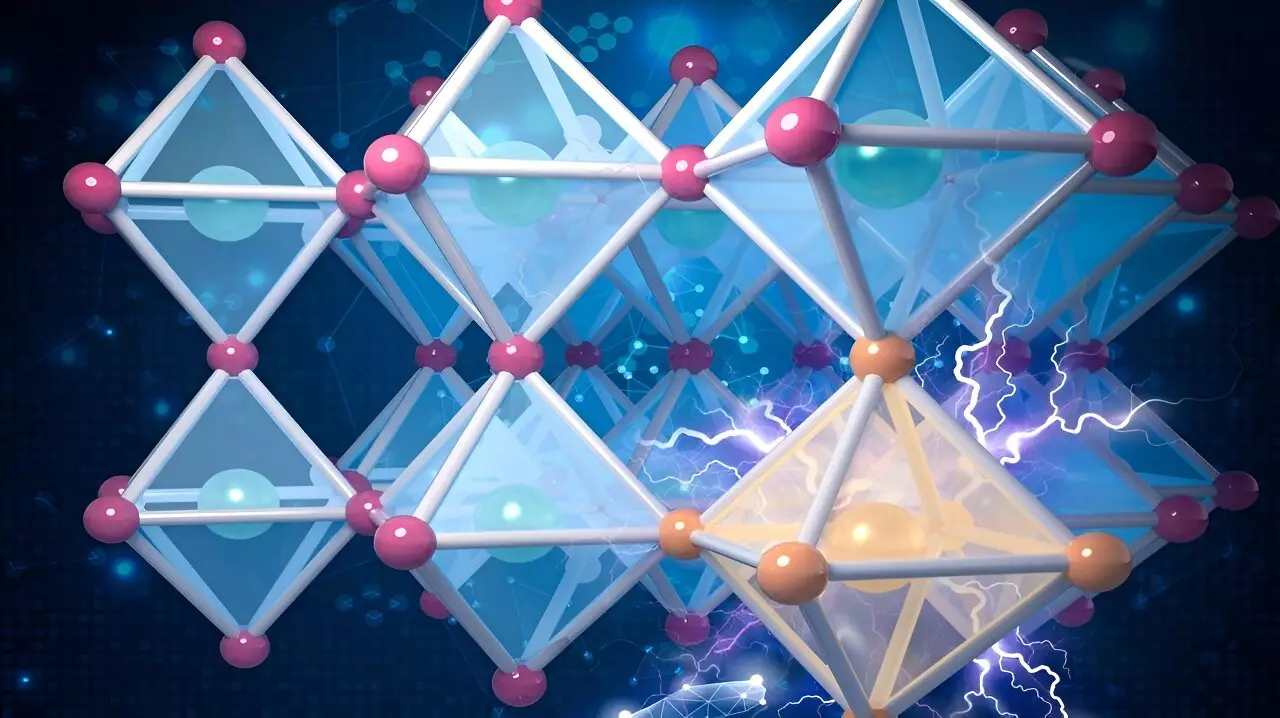In a world where the shift towards renewable energy sources is becoming increasingly critical, the search for efficient and cost-effective materials for solar cells is more important than ever. While silicon has long been the dominant player in solar technology, the emergence of perovskites as a viable alternative has sparked new interest due to their lower costs and simpler manufacturing processes. However, the key challenge lies in finding perovskite materials with the right “band gap” – a crucial factor that determines how effectively a material can convert sunlight into electricity without losing it as heat.
A groundbreaking research project at EPFL, led by Haiyuan Wang and Alfredo Pasquarello, has harnessed the power of machine learning to revolutionize the search for optimal perovskite materials for photovoltaic applications. By combining advanced computational techniques with machine learning algorithms, the team has successfully identified 14 new materials that show great promise for use in solar cells. This innovative approach has the potential to not only improve the efficiency of solar panels but also drive down costs, ultimately reshaping the standards of the solar industry.
The Methodology
The researchers at EPFL began by compiling a robust dataset of band-gap values for 246 different perovskite materials. This dataset was created using sophisticated calculations based on hybrid functionals, a type of computation that incorporates electron exchange and provides more accurate predictions compared to traditional Density Functional Theory (DFT). By utilizing dielectric-dependent hybrid functionals, which take into account a material’s electronic polarization properties, the researchers were able to significantly enhance the accuracy of their band-gap predictions, especially for complex materials like perovskites.
Once the dataset was established, the team turned to machine learning to sift through a vast database of approximately 15,000 candidate materials for solar cells. By training a machine learning model on the known perovskite materials and their band gaps, the researchers were able to identify the most promising candidates based on their predicted band gaps and stability. Through this process, the model uncovered 14 entirely new perovskites that exhibit both optimal band gaps and high energetic stability, making them ideal candidates for high-efficiency solar cells.
Implications for the Solar Industry
The application of machine learning in the search for new photovoltaic materials has the potential to revolutionize the solar industry by accelerating the discovery and validation process. By streamlining this process, researchers can reduce costs, speed up the adoption of solar energy, and ultimately contribute to the global effort to combat climate change. With the discovery of these new perovskite materials, the future of solar cell technology looks brighter than ever before.
The EPFL research project represents a significant step forward in the quest for efficient and affordable materials for solar cells. By leveraging the power of machine learning and advanced computational techniques, the researchers have paved the way for a new era in solar cell technology. The discovery of 14 promising perovskite materials underscores the immense potential of this approach and highlights the transformative impact it could have on the solar industry. As we continue to embrace renewable energy sources, innovations like these are crucial in driving progress towards a more sustainable future.


Leave a Reply